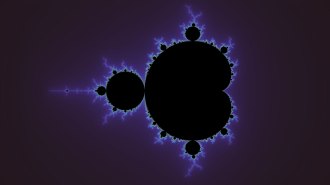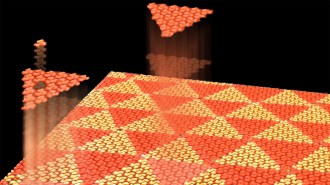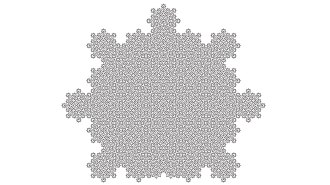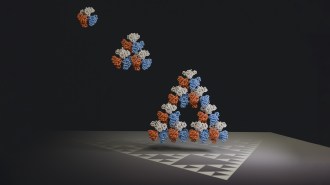It was a dark and stormy night. Unable to continue driving, two truck drivers, John and Bill, were stuck at the (clever name here) Truck Stop and decided to have dinner together. At the end of their meal, Bill noticed that his water glass was empty while John’s glass was still full. Bill was terribly thirsty, and since the waitresses were extremely busy, he stuck his straw in John’s glass, put his finger on the top to trap water, moved the straw over to his glass and released the water. He wondered what would happen if he did this over and over again. Would he ever end up with equal amounts of water in the two glasses?
![]()
“Mathematically, Bill’s question is an interesting one,” Kevin Iga and Kendra Killpatrick of Pepperdine University propose in the March College Mathematics Journal. The problem was originally presented to Killpatrick by a truck driver (named John) who had assisted her with a move across the country.
Iga and Killpatrick define a straw move to mean putting a straw into a glass of water until it touches bottom. Hence, the straw is filled to the same height as the water in the glass. The trapped water is then transferred to another glass.
Iga and Killpatrick assume that the two glasses are identical cylinders. So, the amount of water taken up by the straw during each straw move is a constant fraction of the amount of water in the glass. In other words, it’s given by the ratio of the volume of water in the straw to the volume of water in the glass, p.
Given that x represents what fraction of the total water is in John’s glass, 1 – x represents the fraction of the water that’s in Bill’s glass.
In the truck stop scenario, John’s glass is initially full and Bill’s glass is empty, so x = 1. After one straw move, John’s glass contains 1 – p of the total water and Bill’s glass contains p of the water.
It turns out that it’s possible to reach a point when each glass contains half of the water only if the straw is exactly the right size.
Iga and Killpatrick come up with the following formula:
where k is the number of straw moves it takes to reach equality.
Given that a realistic value of p might be about 0.015, it would take 46 straw moves to reach a distribution that leaves 49.896 percent of the water in John’s glass and 50.104 percent of the water in Bill’s glass.
“Therefore, for this straw size, equality is never attained; one of the glasses always has more water than the other,” the authors conclude, “but after 46 moves, it is very close (and likely indistinguishable to the human eye).”
But that’s just the beginning. What happens if neither glass is empty and the two glasses initially contain unequal amounts of water? What if straw moves are allowed both from John’s glass to Bill’s and from Bill’s to John’s?
Intriguingly, such investigations lead into the realm of chaotic dynamics and sensitive dependence on initial conditions.
Check out Ivars Peterson’s MathTrek blog at http://blog.sciencenews.org/.






